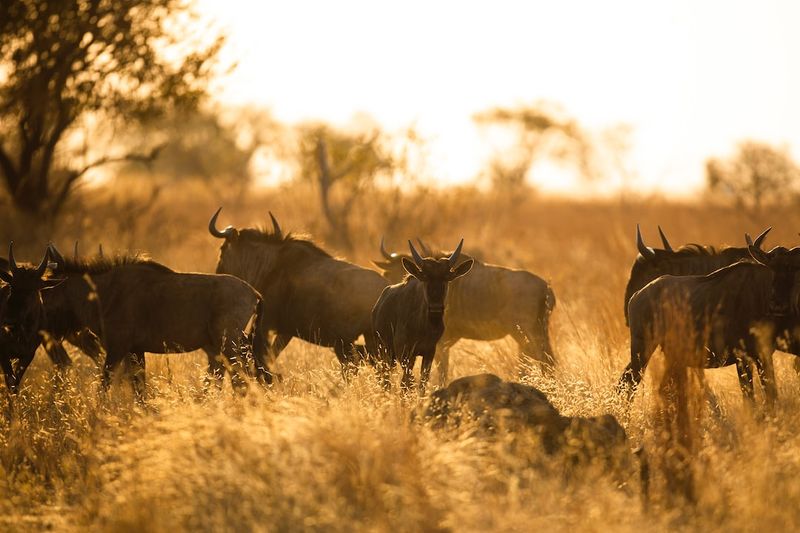South Australia Farmer Catches Spotted Quoll in First Official State Sighting for 130 Years
A remarkable discovery has been made in South Australia, as a farmer successfully trapped and photographed a spotted quoll, a species not recorded in the state for over 130 years. Pao Ling Tsai had been losing chickens to a predator on his property and managed to capture images of the elusive animal before it escaped. After reporting the sighting to South Australia’s national parks and wildlife service, a trap was set and the spotted-tailed quoll, also known as the tiger quoll, was found inside on Thursday morning.
A Species Rediscovered
The presence of the spotted-tailed quoll in South Australia is a significant find, considering its status as an endangered species on the mainland and vulnerable in Tasmania. According to Limestone Coast ranger Ross Anderson, the last official record of this quoll in South Australia dates back over a century. While there have been unofficial sightings, none have been backed by photographic evidence or captured animals. This rediscovery is an exciting development in conservation efforts.
Threats to the Spotted Quoll
The Australian Conservation Foundation estimates that there are only around 14,000 spotted quolls left in the wild. This population decline is due to factors such as loss of habitat, predation, and competition with introduced predators like cats and foxes. These threats have pushed the spotted quoll to the brink of extinction in many parts of Australia. The finding in South Australia raises questions about the origin of the trapped quoll. It is not yet clear if it is a relic population, an escapee from captivity, or a lone animal that has traveled a great distance.
Conservation Efforts and Future Research
The importance of protecting endangered species cannot be overstated. The discovery of the spotted quoll in South Australia highlights the need for ongoing conservation efforts and research. The trapped quoll was taken to a veterinarian to check for microchipping, as some quolls are kept in captivity. It was treated for mange and DNA samples were collected from its hair. Once it has fully recovered, the animal will be released back into the wild in the surrounding area it is familiar with.
Rangers and local authorities are now working on monitoring the area through the use of cameras and traps to determine if there are other quolls present. The community has been urged to refrain from setting their own traps to avoid any harm to the newly discovered population. It is essential to gather more information about the habitat, behavior, and population size of the spotted quoll in order to develop effective conservation strategies.
Conservation and Pet Containment
Conservationists in Australia have been advocating for pet containment measures to protect native wildlife. Domestic cats, in particular, pose a significant threat to various species, including the spotted quoll. Cats that are allowed to roam freely often hunt and kill native animals, further exacerbating the decline of already vulnerable populations.
The Importance of Keeping Cats Indoors
Keeping domestic cats indoors or within enclosed spaces can greatly reduce their negative impact on wildlife. By limiting their hunting activities, cat owners can contribute to the protection of endangered species like the spotted quoll. The Australian Conservation Foundation has emphasized the need for pet containment measures as part of broader conservation strategies.
Addressing Loss of Habitat and Protecting Biodiversity
The decline of the spotted quoll and other endangered species is primarily a result of habitat loss and fragmentation. As human populations increase and land is cleared for various purposes, animals like the spotted quoll struggle to find suitable areas to live and reproduce. Protecting and restoring habitats and creating wildlife corridors are essential steps in ensuring the survival of these species.
An Urgent Call to Action
The rediscovery of the spotted quoll in South Australia should serve as a wakeup call for all Australians. It is crucial that individuals, communities, and governments work together to protect and conserve our unique flora and fauna. Strict enforcement of conservation regulations, investment in research and monitoring, as well as public awareness campaigns, are key elements in safeguarding endangered species and preserving our biodiversity.

<< photo by Pieter van Noorden >>
The image is for illustrative purposes only and does not depict the actual situation.
You might want to read !
- Eastwall and AOG Join Forces to Supercharge Clinical AI Initiatives in Healthcare
- “Famous Tree Scandal: Controversy Surrounds Arrest of 16-Year-Old at Sycamore Gap”
- Teenager in Custody Following Vandalism of Iconic Sycamore Tree along Hadrian’s Wall
- Stormy Skies Cause Delays for Brisbane Lions’ Grand Final Flight
- Will Sam Whitelock surpass Richie McCaw’s record as the most capped All Black?
Sam Whitelock on track to overtake Richie McCaw as All Blacks’ most capped player
- Down Under, Downcast: Rick and Morty Season 7 Sees the Absence of Co-Creator Justin Roiland
- The Impact of Metricon Cancellations on South Australian Customers
- Prepare for the “Great Outback Awakening”: Flagstone, Birnam, and Veresdale Scrub residents urged to be ready for potential bushfire threat
- Lazy Legends: How Sloths Defy Darwinian Logic | An In-Depth Analysis
- ProducePay: Cultivating Innovation on the Global Stage
- Jimmy and Rosalynn Carter’s Heartland Homecoming: A Reunion Celebrating Georgia’s History and Hope
- Rethinking Kava: Unearthing the True Potential of this Pacific Panacea




